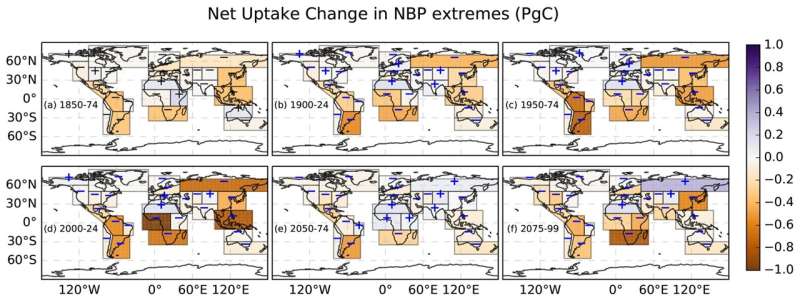This article has been reviewed according to Science X's editorial process and policies. Editors have highlighted the following attributes while ensuring the content's credibility:
fact-checked
peer-reviewed publication
trusted source
proofread
Modeling climate extremes to show effect on atmospheric carbon

Researchers from Oak Ridge National Laboratory and Northeastern University modeled how extreme conditions in a changing climate affect the land's ability to absorb atmospheric carbon—a key process for mitigating human-caused emissions. They found that 88% of Earth's regions could become carbon emitters by the end of the 21st century.
The paper is published in the journal Biogeosciences.
Climate extremes lasting months or years could reduce plant productivity, which governs Earth's capacity to produce food, fiber and fuel. Plus, events such as wildfires could generate bursts of emissions from carbon stored in forests.
The team used the open-source Community Earth System Model to simulate multiple variables, which enabled a holistic understanding of how climatic conditions interact.
"Our results suggest that meteorological extremes will become more frequent, intense and widespread due to the compound effect of high temperature, drought and fire," said ORNL's Bharat Sharma. "Tropical regions may face these to the most extreme degree."
More information: Bharat Sharma et al, Carbon cycle extremes accelerate weakening of the land carbon sink in the late 21st century, Biogeosciences (2023). DOI: 10.5194/bg-20-1829-2023
Journal information: Biogeosciences
Provided by Oak Ridge National Laboratory




















